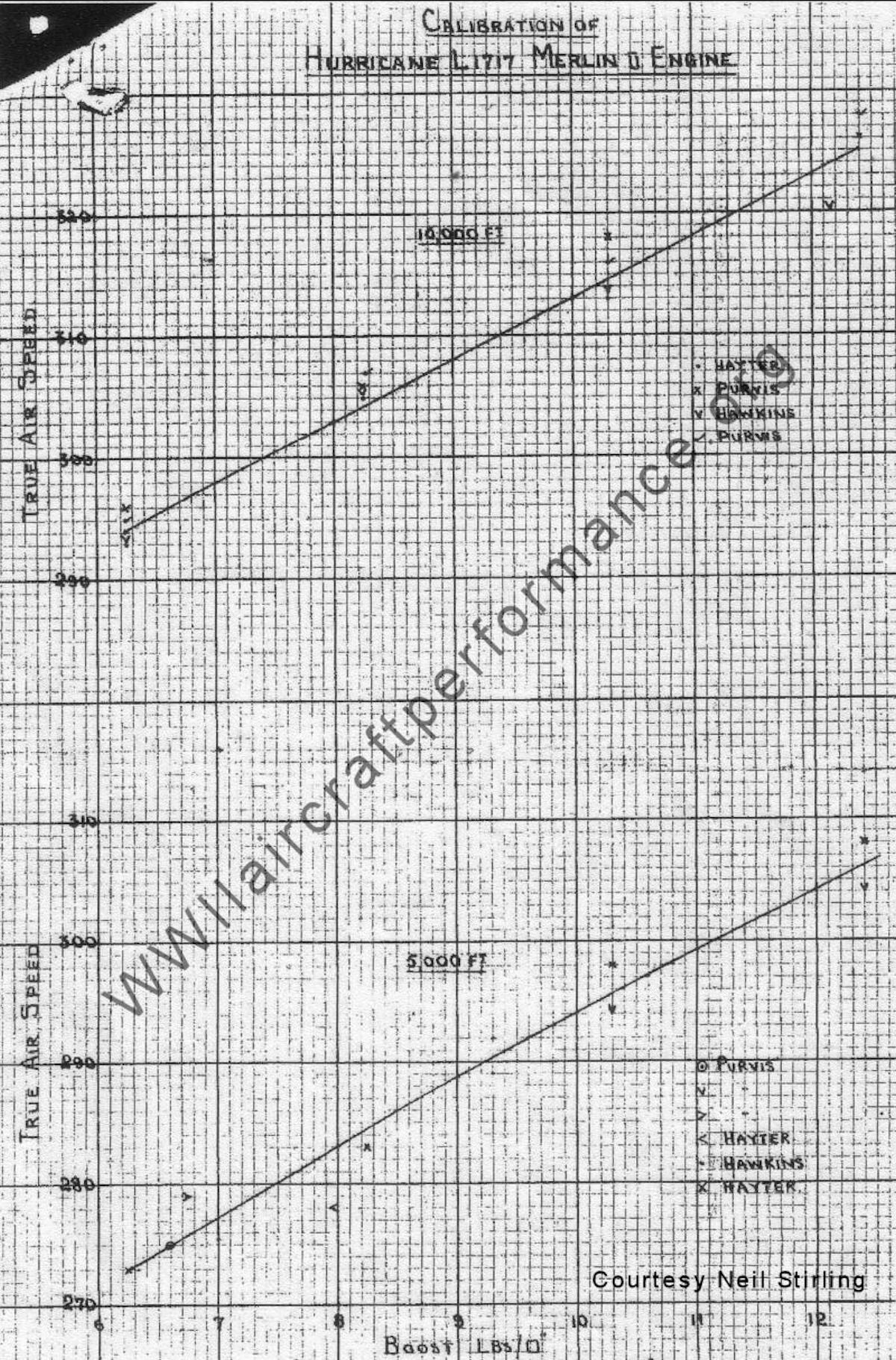The following table shows a test of a Spitfire Mk Ia and Spitfire Mk II (399)

Table 1: There is only a marginal improvement in the rate of climb and maximum speed comparing both planes in the first table...
Bailey concludes that the main advantage of 100 octane fuel was at lower altitudes, but was marginal at best at higher altitudes.(401) His table demonstrate that there is actually a drop in top speed at higher altitudes.
Bailey on the boost of the Merlin engine
The author gives the following information about the boost increase that was achieved by 100 octane fuel: Normal limitation on the supercharger compression of a Rolls-Royce Merlin III with 87 octane fuel was +6.25 inch above atmospheric pressure. The introduction of 100 octane fuel increased this to +12 for short periods, not exceeding 5 minutes.(39

Take off to 1,000 ft — 3,000 rpm at +7 psi/+12.5 psi;
Maximum climb (1-hr. limit) — 2,850 rpm at +7 psi/+9 psi;
Combat (5 min. maximum) — 3,000 rpm at +7 psi/+12 psi.
(This chart is about Spitfire MK II with 100 octane boost which Baily took from the following source: Air Ministry, Air Publication 1565B, Pilots Notes, Spitfire IIA and IIB Aeroplanes, Merlin XII Engine (anonymous Air Ministry publication, London, 1940, amended 1942).)
Conclusion by Bailey:
He concludes that the dramatic performance increase because of 100 octane is overrated and that other, earlier, authors wrongly claim that there is. These other authors forgot that the variable pitch prop was the real source of the dramatic performance increase of RAF planes which they contribute solely to 100 octane fuel.
Comment by me regarding the information given above: It seems that an increase from 87 to 100 octane fuel (but with a variable pitch for both) only leads to a marginal improvement. Whether the planes in this game are modelled correctly is not within the scope of this argument.
Regards,
Thijs



